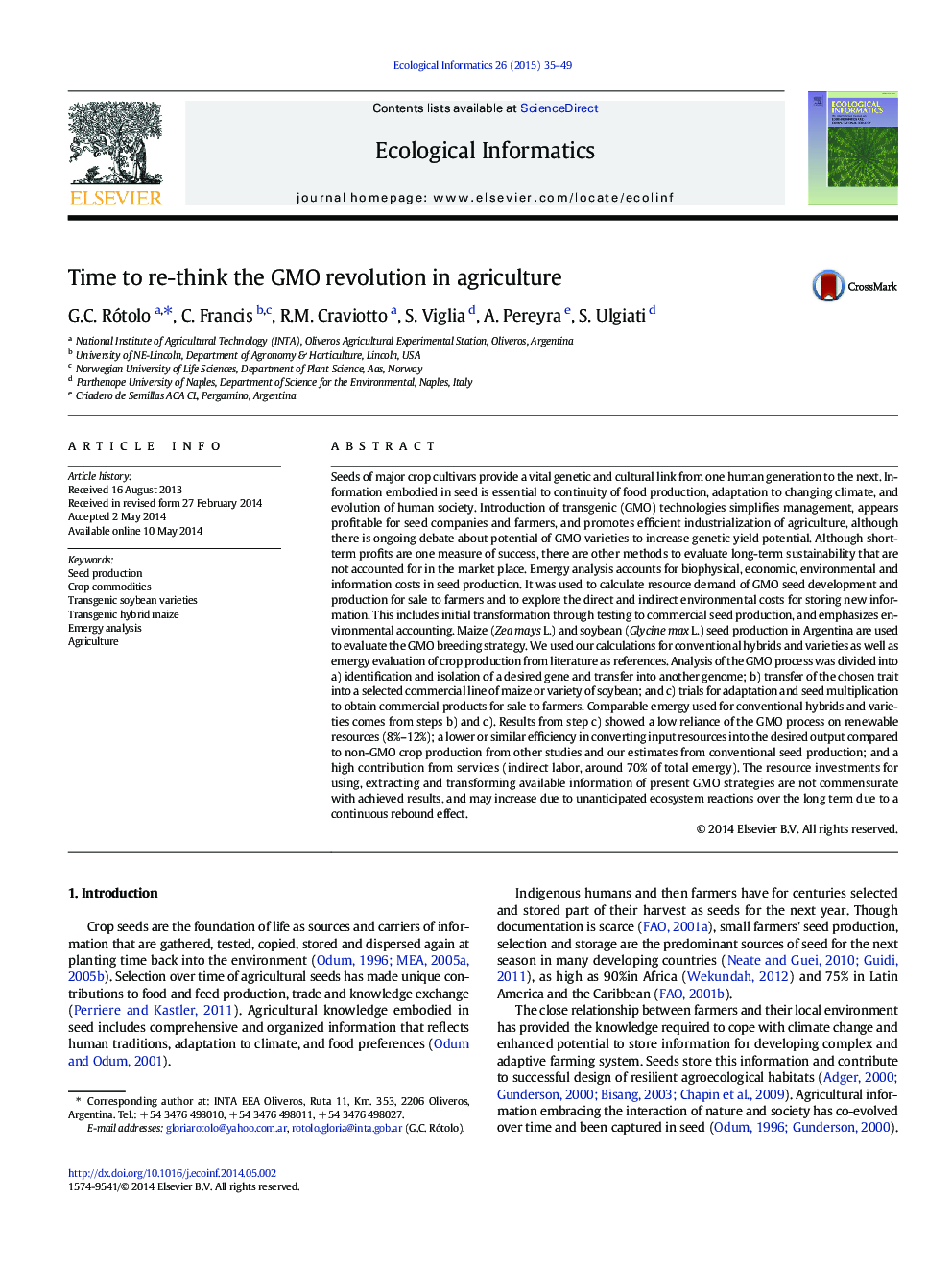| کد مقاله | کد نشریه | سال انتشار | مقاله انگلیسی | نسخه تمام متن |
|---|---|---|---|---|
| 4374854 | 1303223 | 2015 | 15 صفحه PDF | دانلود رایگان |

• The process for obtaining transgenic (GMO) maize and soybean seeds is investigated.
• Direct and indirect environmental costs of storing new information in GMO commodity seeds are assessed.
• GMO crops do not show emergy-based performances competitive with non-GMO agriculture.
• Genetically modified organisms (GMO) require resource investment non-commensurate to achieved results.
• Environmental costs are expected to increase further in a rebound effect loop.
Seeds of major crop cultivars provide a vital genetic and cultural link from one human generation to the next. Information embodied in seed is essential to continuity of food production, adaptation to changing climate, and evolution of human society. Introduction of transgenic (GMO) technologies simplifies management, appears profitable for seed companies and farmers, and promotes efficient industrialization of agriculture, although there is ongoing debate about potential of GMO varieties to increase genetic yield potential. Although short-term profits are one measure of success, there are other methods to evaluate long-term sustainability that are not accounted for in the market place. Emergy analysis accounts for biophysical, economic, environmental and information costs in seed production. It was used to calculate resource demand of GMO seed development and production for sale to farmers and to explore the direct and indirect environmental costs for storing new information. This includes initial transformation through testing to commercial seed production, and emphasizes environmental accounting. Maize (Zea mays L.) and soybean (Glycine max L.) seed production in Argentina are used to evaluate the GMO breeding strategy. We used our calculations for conventional hybrids and varieties as well as emergy evaluation of crop production from literature as references. Analysis of the GMO process was divided into a) identification and isolation of a desired gene and transfer into another genome; b) transfer of the chosen trait into a selected commercial line of maize or variety of soybean; and c) trials for adaptation and seed multiplication to obtain commercial products for sale to farmers. Comparable emergy used for conventional hybrids and varieties comes from steps b) and c). Results from step c) showed a low reliance of the GMO process on renewable resources (8%–12%); a lower or similar efficiency in converting input resources into the desired output compared to non-GMO crop production from other studies and our estimates from conventional seed production; and a high contribution from services (indirect labor, around 70% of total emergy). The resource investments for using, extracting and transforming available information of present GMO strategies are not commensurate with achieved results, and may increase due to unanticipated ecosystem reactions over the long term due to a continuous rebound effect.
Journal: Ecological Informatics - Volume 26, Part 1, March 2015, Pages 35–49